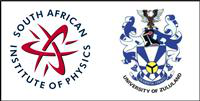Speaker
Would you like to <br> submit a short paper <br> for the Conference <br> Proceedings (Yes / No)?
No
Level for award<br> (Hons, MSc, <br> PhD)?
PhD
Apply to be<br> considered for a student <br> award (Yes / No)?
Yes
Main supervisor (name and email)<br>and his / her institution
Dr Deena Naidoo
Deena.Naidoo@wits.ac.za
School of Physics, University of the Witwatersrand
Abstract content <br> (Max 300 words)
ZnO doped with 3d metals has attracted much attention since the theoretical prediction of Curie temperatures above room temperature resulting from carrier mediated magnetic interactions due to itinerant holes coupling with localized dopant spins. Several published reports reveal that these materials exhibit different forms of magnetism, the origin of which is still under debate. We have undertaken emission 57Fe Mössbauer spectroscopy measurements following implantation of radioactive 57Mn+ ions (3·1012/cm2) at ISOLDE/CERN, on virgin and 56Fe pre-implanted ZnO samples with fluences of 2·1013/cm2, 5·1013/cm2 and 7·1013/cm2. The samples were held at temperatures between 77 – 726 K in an implantation chamber and spectra were collected at gamma emission angles of 60o relative to the sample c-axis. The spectra reveal magnetic structure in the ‘wings’ on a wide velocity scale (±12 mm/s) which were analysed using a semi-empirical relaxation model utilizing five Blume-Tjon sextets. The observed temperature-dependent magnetic effect may be explained by a slow spin-lattice relaxation due to paramagnetic Fe3+ weakly coupled to the lattice. The central part of spectra were fitted with two quadrupole split doublets assigned to Fe in regular crystalline sites (FeC) and in interstitial sites (FeI) in the lattice. The spin–lattice relaxation rates of Fe3+ in the 56Fe pre-implanted ZnO samples increases with increasing fluence, and in the virgin ZnO sample follows a T 9 temperature dependence but in the pre-implanted samples show a transition towards a T 2 dependence. This result suggests that an increase in implantation fluence favours the two phonon process. The annealing behaviour and variation of hyperfine parameters in these materials will also be discussed.

